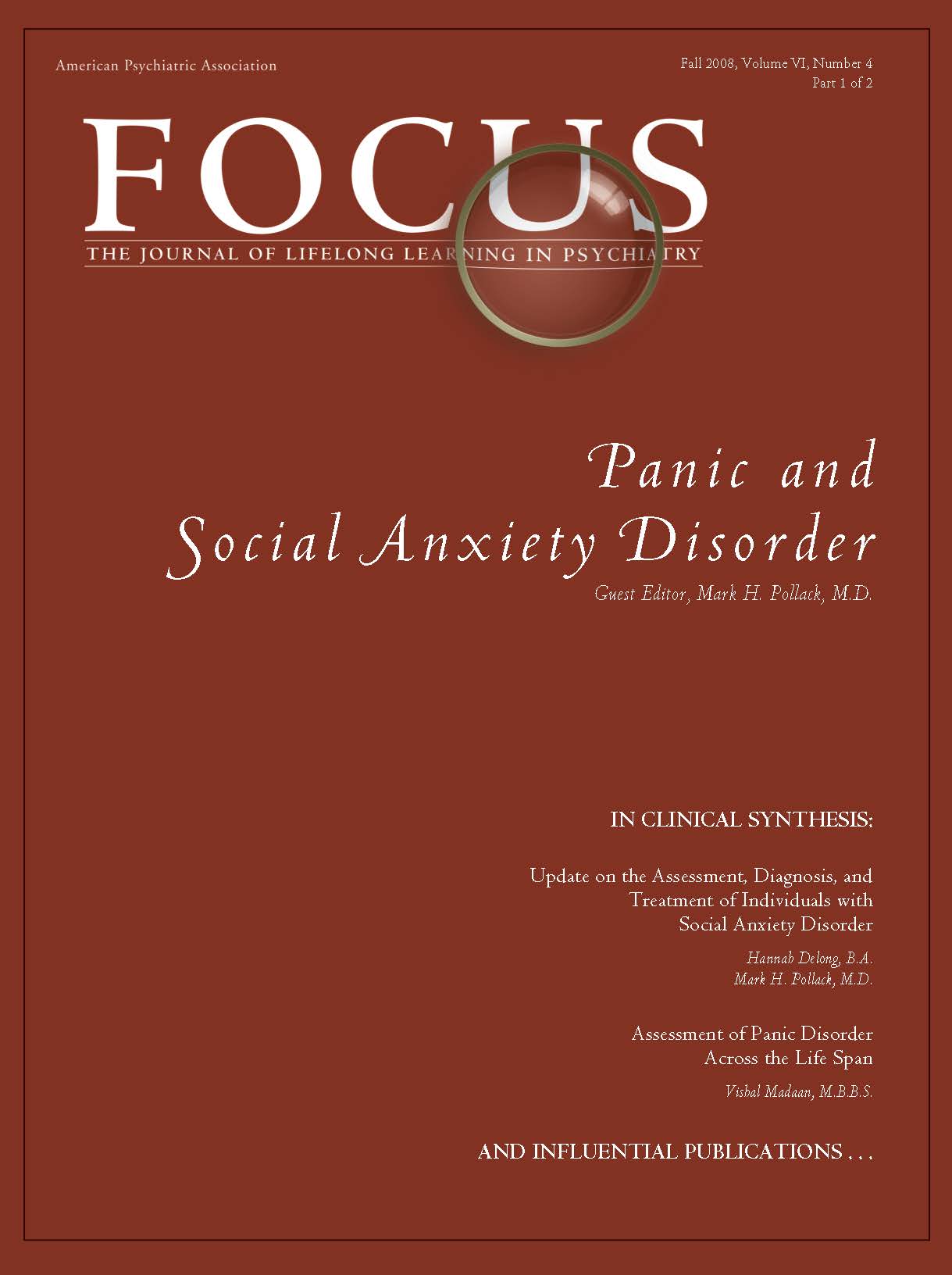Psychotherapy Plus Antidepressant for Panic Disorder With or Without Agoraphobia: Systematic Review
Abstract
Background:
METHOD
INCLUSION CRITERIA
IDENTIFICATION OF TRIALS
QUALITY ASSESSMENT AND DATA EXTRACTION
DATA SYNTHESIS
SUBGROUP AND SENSITIVITY ANALYSES
RESULTS
DESCRIPTION OF STUDIES
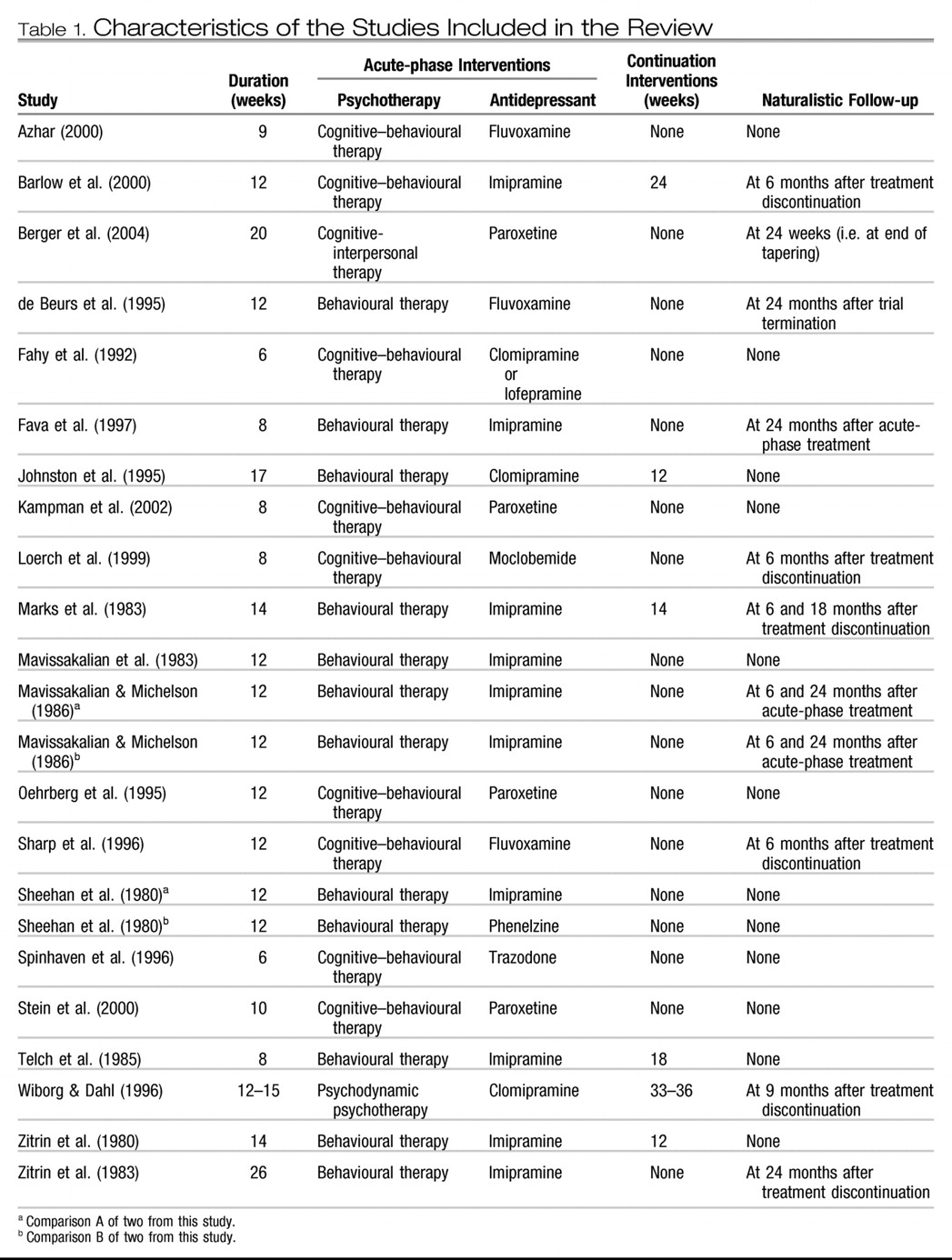
PSYCHOTHERAPY PLUS ANTIDEPRESSANT V. ANTIDEPRESSANT TREATMENT
ACUTE-PHASE TREATMENT
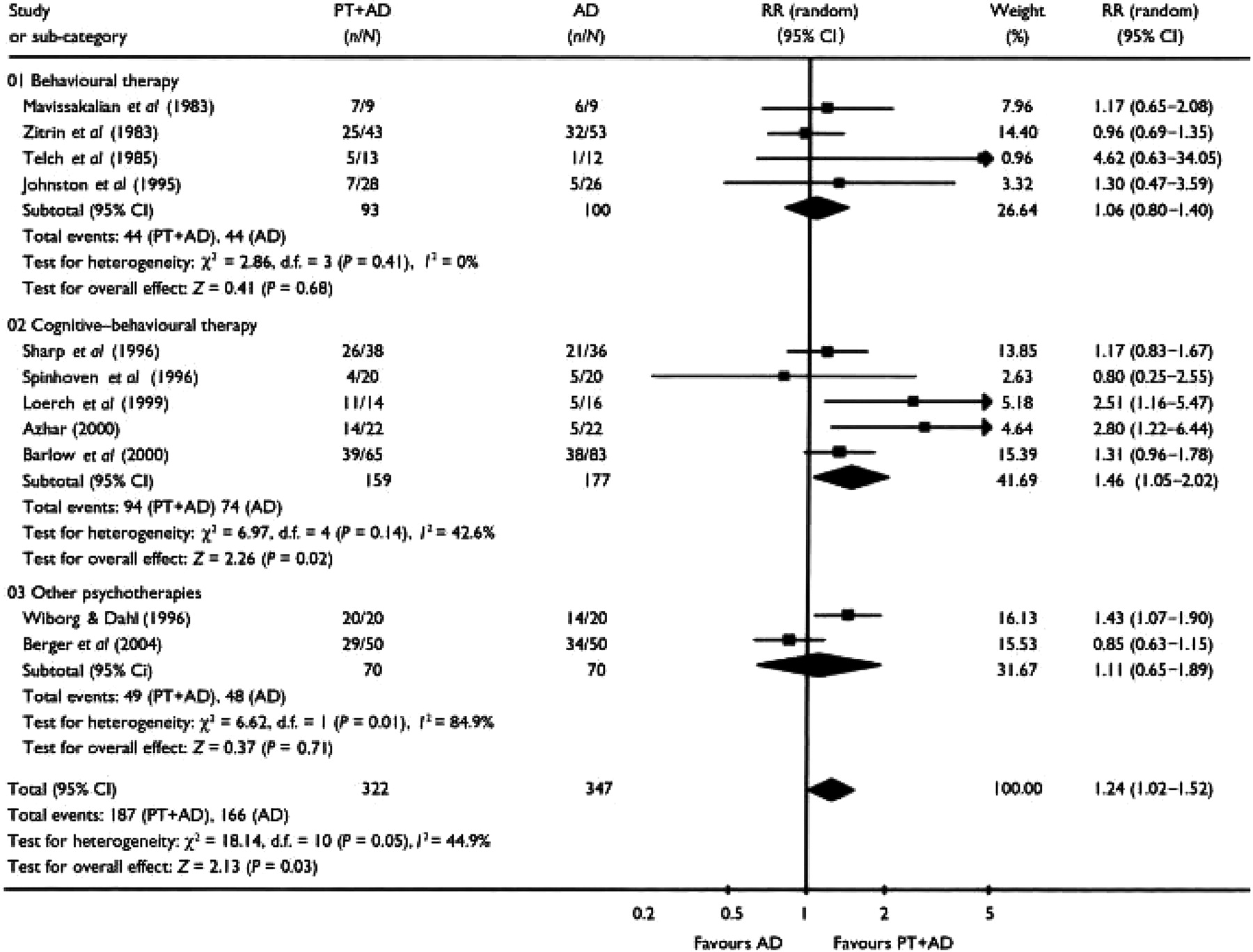
CONTINUATION TREATMENT
AFTER TERMINATION OF TREATMENT
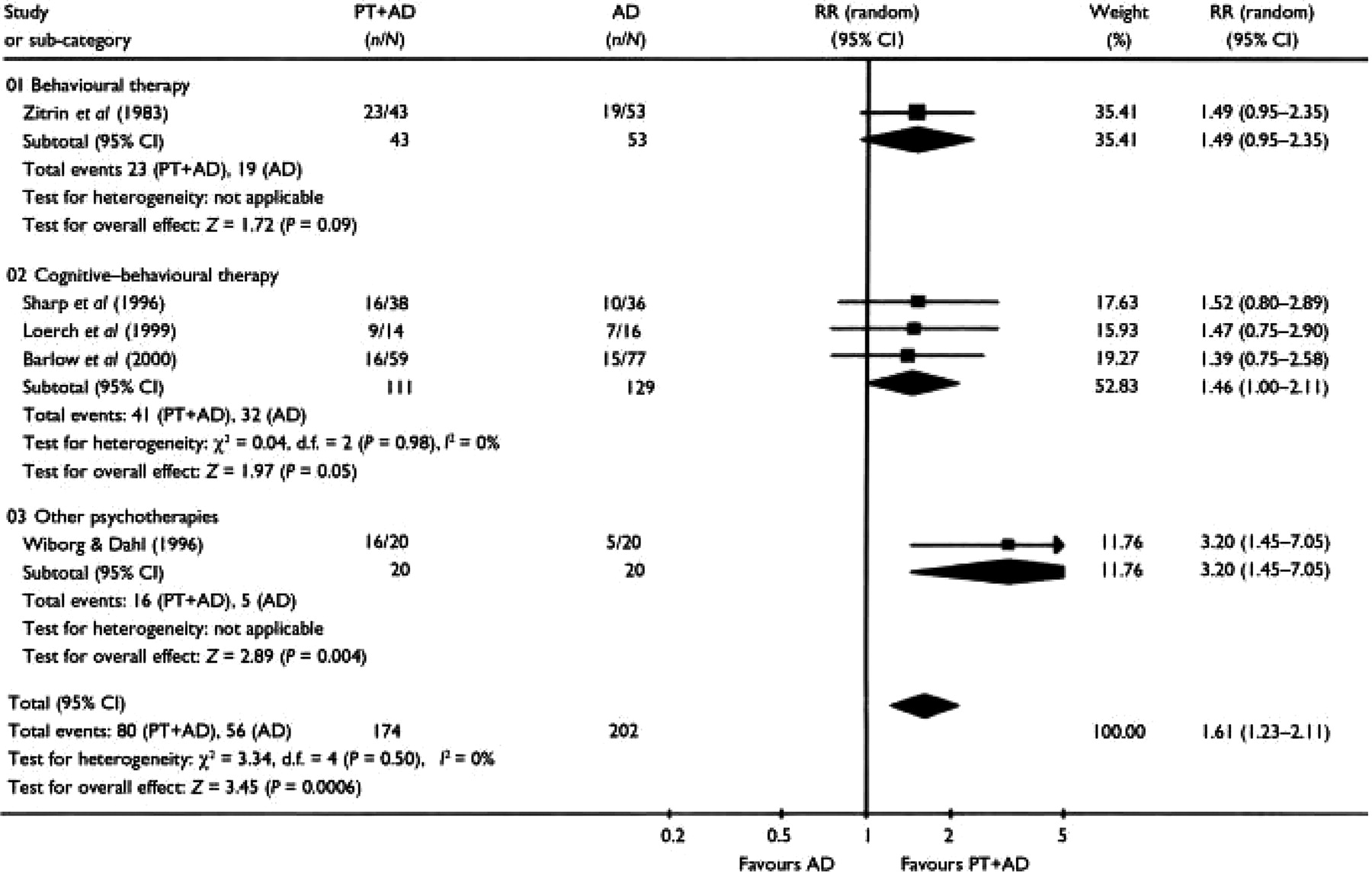
PSYCHOTHERAPY PLUS ANTIDEPRESSANT V. PSYCHOTHERAPY
ACUTE-PHASE TREATMENT
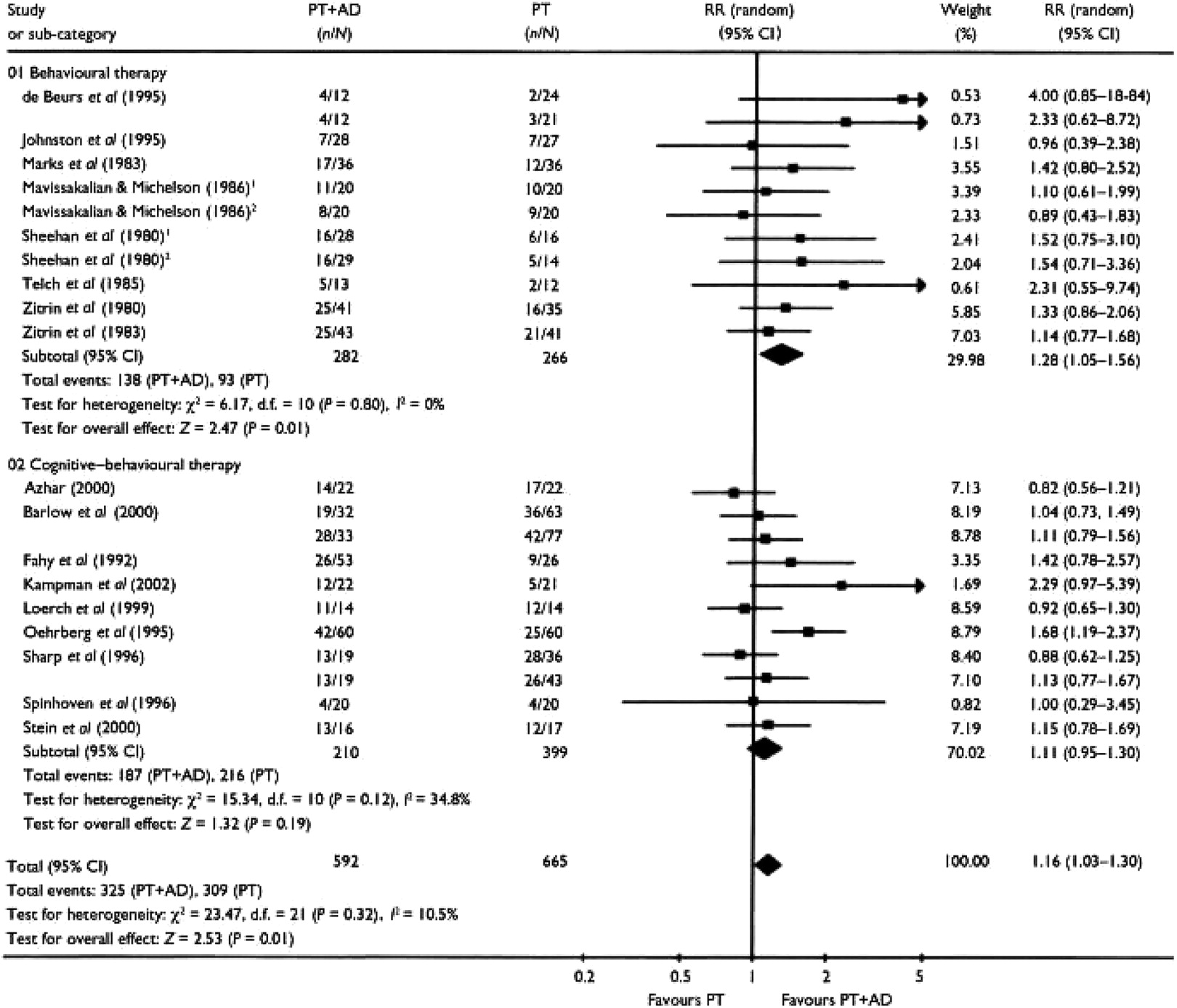
CONTINUATION TREATMENT
AFTER TERMINATION OF TREATMENT
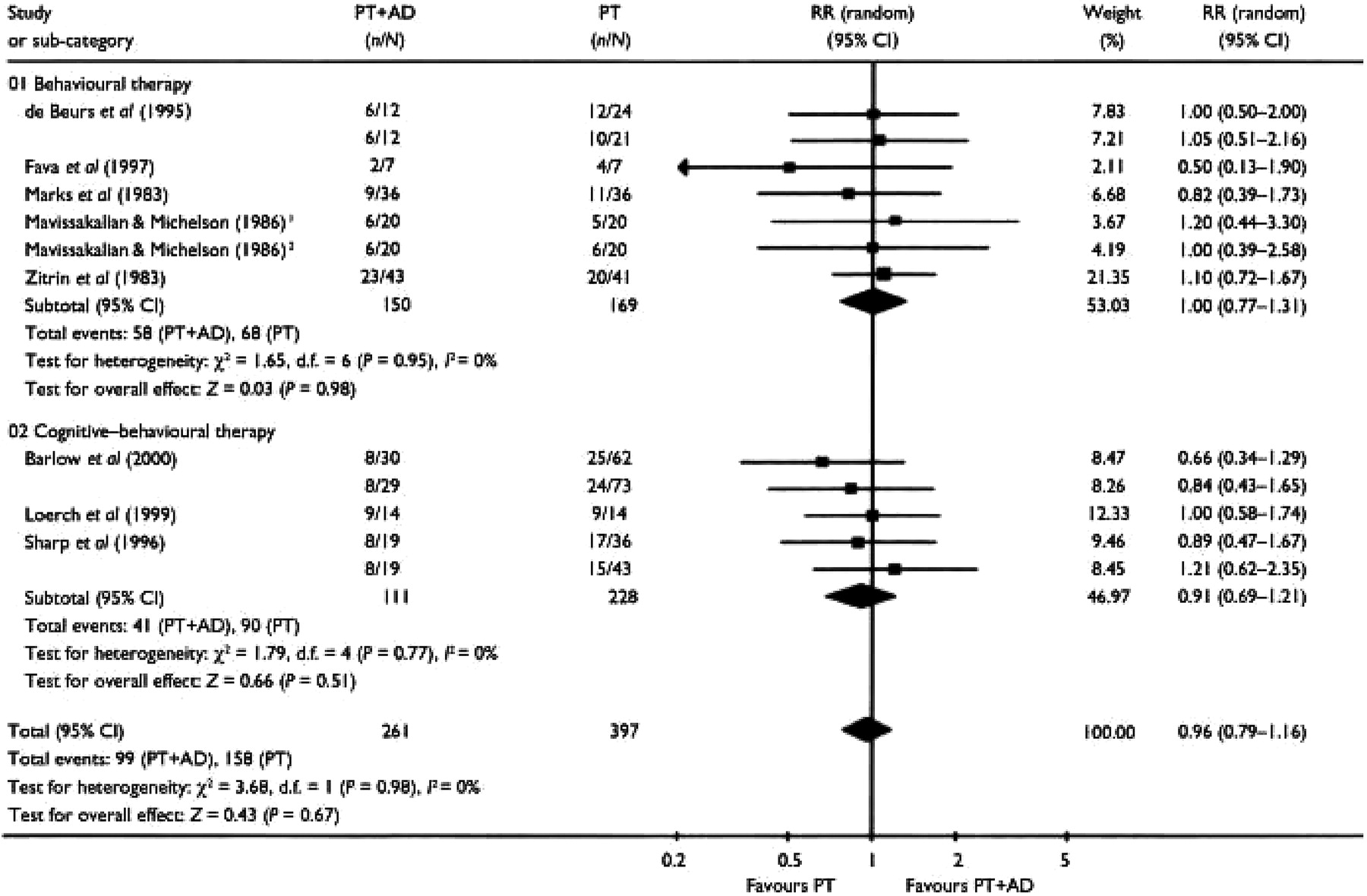
SUBGROUP AND SENSITIVITY ANALYSES
TYPES OF PSYCHOTHERAPY
CLASSES OF ANTIDEPRESSANTS
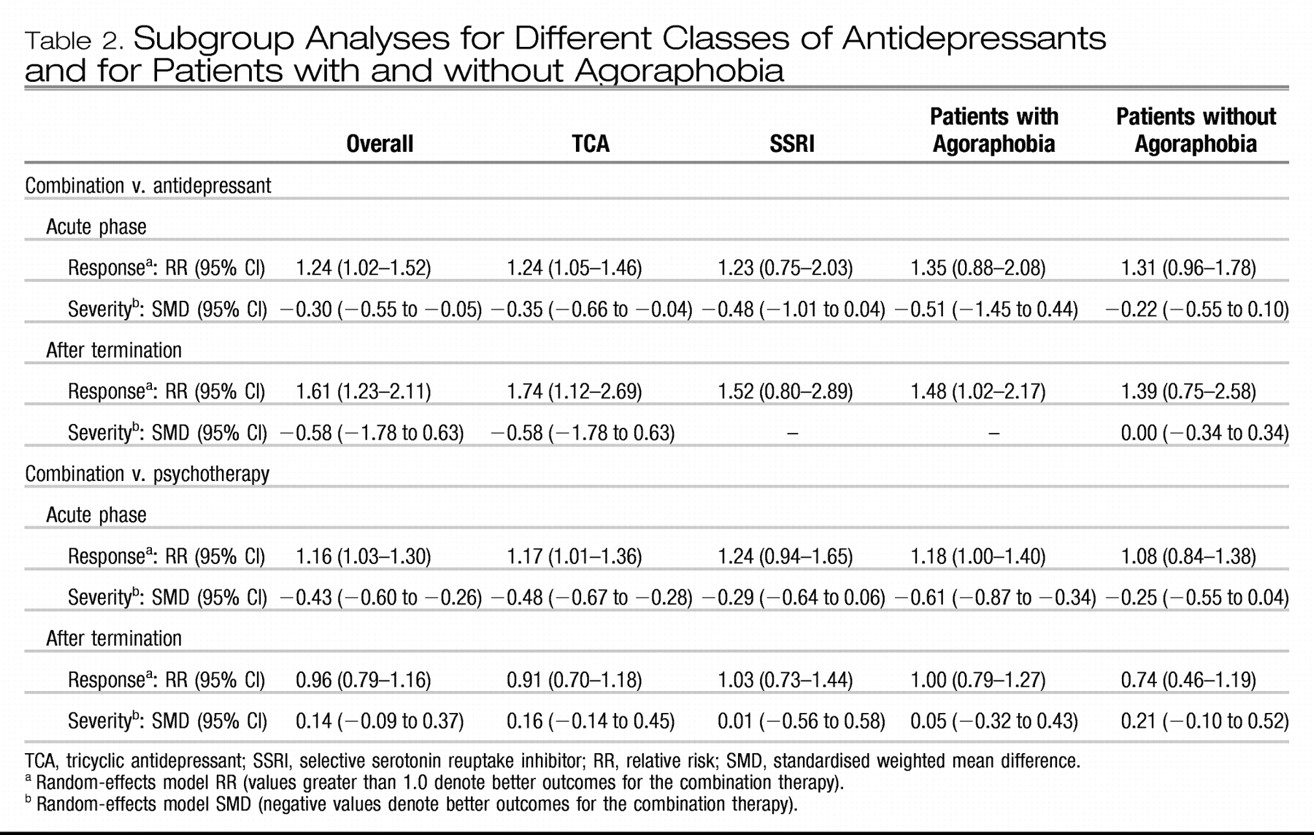
PATIENTS WITH AND WITHOUT AGORAPHOBIA
DISCUSSION
IMPORTANCE OF THE CLINICAL PROBLEM IN THE CONTEXT OF PREVIOUS REVIEWS
CURRENT FINDINGS
STRENGTHS AND LIMITATIONS
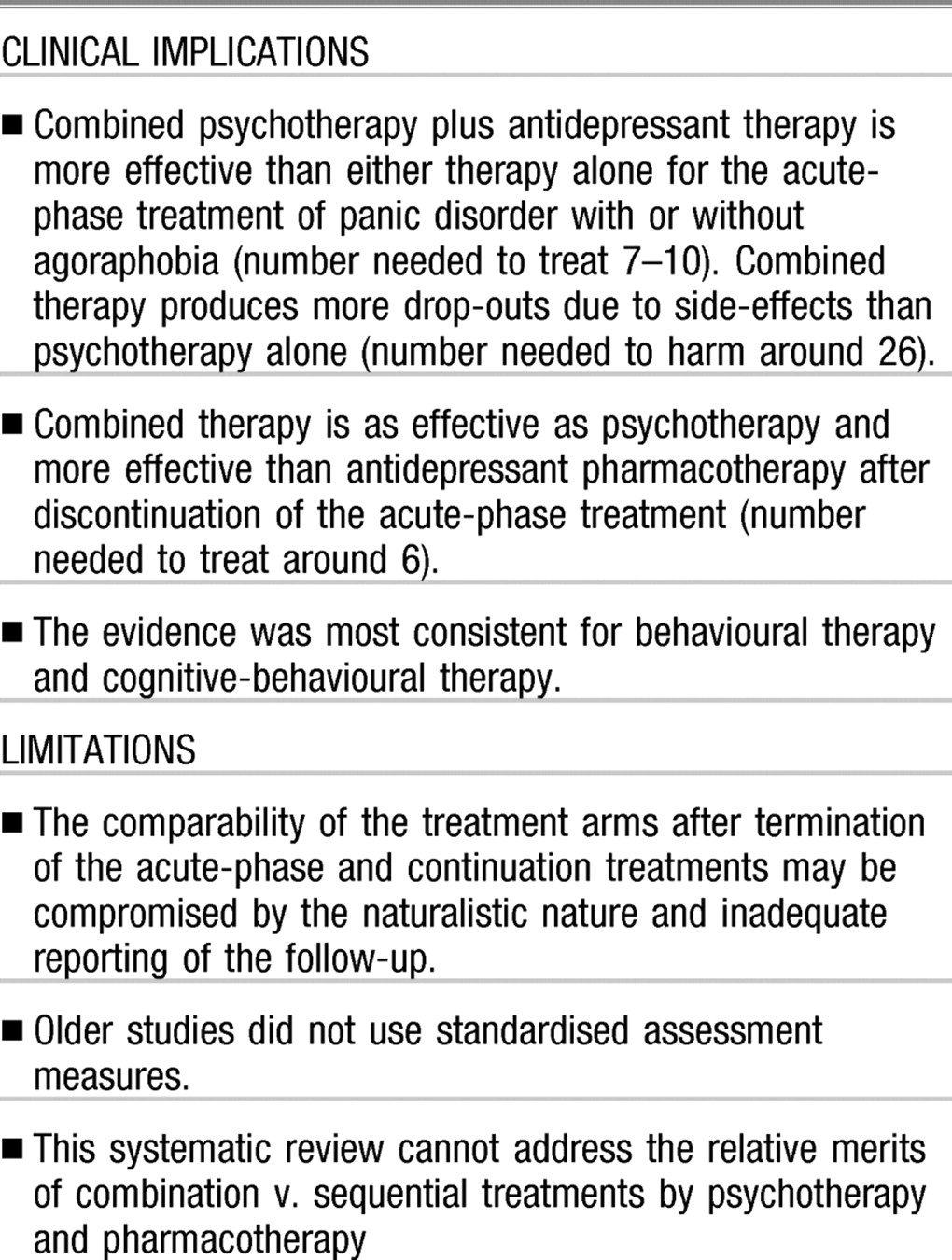
CLINICAL IMPLICATIONS AND FUTURE RESEARCH
REFERENCES
Information & Authors
Information
Published In
History
Authors
Metrics & Citations
Metrics
Citations
Export Citations
If you have the appropriate software installed, you can download article citation data to the citation manager of your choice. Simply select your manager software from the list below and click Download.
For more information or tips please see 'Downloading to a citation manager' in the Help menu.
View Options
View options
PDF/EPUB
View PDF/EPUBGet Access
Login options
Already a subscriber? Access your subscription through your login credentials or your institution for full access to this article.
Personal login Institutional Login Open Athens loginNot a subscriber?
PsychiatryOnline subscription options offer access to the DSM-5-TR® library, books, journals, CME, and patient resources. This all-in-one virtual library provides psychiatrists and mental health professionals with key resources for diagnosis, treatment, research, and professional development.
Need more help? PsychiatryOnline Customer Service may be reached by emailing [email protected] or by calling 800-368-5777 (in the U.S.) or 703-907-7322 (outside the U.S.).
